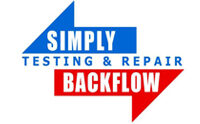An Explanation of Backflow and the Consequences
Certain property owners need to understand safety issues such as backflow in order to keep their plumbing system clean and potable. Backflow is a problem that can be particularly dangerous for any business that uses chemicals and cleaners or handles raw meats which can contain bacteria. Commercial properties that fall into specific categories are required by law to prevent backflow and keep their water safe from potential contamination. It is important for building owners to understand what backflow is, how to prevent it and determine whether they are required by law to install and test a backflow prevention device.
What Backflow Means
Backflow is a particular problem that affects plumbing systems, and under certain circumstances can lead to contaminated drinking water. Backflow is when the flow of water is reversed, causing a water supply to move in the opposite direction and enter another supply through a cross-connection. In many instances, this can mean water polluted with chemicals and bacteria is flowing into clean drinking water through a connection and causing contamination. The cause of backflow is usually some kind of change in pressure caused by activities such as a fire hydrant being opened, a water main breaking or simply higher water usage. Pressure changes cause the water flow to reverse and affect another water supply. The two types of pressure changes that can cause backflow are back pressure and back-siphonage. With backpressure, the non-potable water supply is operating under higher pressure and with back-siphonage it has lower pressure than the potable supply. Either kind of pressure change can lead to the polluted water flowing into clean water through a cross-connection.
Backflow can happen unexpectedly and without a person’s awareness, leaving them vulnerable to the possibility of inadvertently drinking polluted water. There have been a number of cases of people drinking water contaminated by backflow and contracting dangerous and even fatal illnesses. Commercial properties that deal with toxic chemicals or bacteria-ridden food on a regular basis are the most at risk for people being harmed by backflow. Some residential properties may also be threatened by backflow as well if certain conditions could cause contamination of the water supply. A property owner that does not take proper measures to prevent backflow is putting everyone at risk for possibly drinking water that could make them seriously sick or lead to their death.
Preventing Backflow and Keeping Clean Water
The consequences of backflow can be very severe and it is the responsibility of a commercial property owner to prevent backflow in every way possible. The way to prevent backflow from being an issue for any building is to install, maintain and regularly test a backflow prevention assembly. There are professionals available to consult about what type of backflow assembly is effective for a given plumbing system. An expert can also install the prevention system properly and be available for any necessary repairs. It is important to keep in mind that backflow preventers are not always in perfect working order. Certain parts can break or the whole system can wear down because of time and weather changes. Having the system checked and tested for its effectiveness is the only way to make sure that backflow is never an issue. An annual backflow test is often required by law so that businesses more vulnerable to the problem can ensure that their water supply is always clean. There is always the possibility that a backflow preventer breaks without the property owners knowledge and people are at risk for drinking contaminated water. Regular maintenance and repair as well as an annual test can keep water clean and safe to drink at all times.
